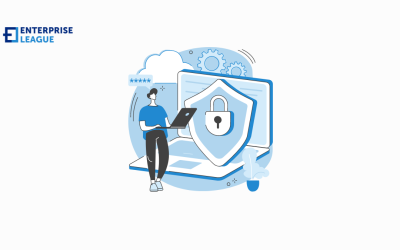The style of working has been changing in many businesses recently. Companies are investing in technologies that will improve employee productivity and customer satisfaction. Since the COVID pandemic, most businesses have switched to a hybrid style of working. Due to this, there was a greater concern for employees’ mental health.
It was something new, and no company was prepared to manage it nicely. It was difficult to provide the right support to workers, and because of this, there was an increase in burnout cases. This is the main reason why employers should create a strategy to ensure the workspace, whether virtual or in-office, is stress-free. Here are some effective tips on how you can provide the best work environment to the employees to ensure they work stress-free, enabling them to give their best.
Creating a stress-free workplace for your employees
Solve technical problems with computer hardware and software
Employers should ensure they provide computers that are properly working. Workers sometimes have to deal with common computer problems during work hours. Some of them are caused by hardware, while others, such as speed, are caused by software.
Speed is critical if the employer wants to record better worker productivity. When computers are slow, it affects the mental health of workers. They spend more time trying to solve technical issues instead of working. This causes work delays and forces the worker to extend working hours which denies them breaks.
It is easy to solve the issue of speed for workers at the office. When an employer uses sysadmins, they provide solutions to issues of speed fast. The tool helps manage, troubleshoot, license, and update hardware and software even when the company is experiencing downtime. Remote workers may require additional support to solve technical issues. If they are using personal computers, installing an effective computer cleaning software will help. Various computer cleaning software are available for workers using Mac which solves speed-related issues that Mac computers might face. Some of the best ones are even available for free.
Create flexible working hours and encourage remote work
Stress in workers often builds up when they work for long hours. Their body begins to feel fatigued and may develop other problems such as headaches and mood. Some workers may feel drowsy or unable to work. These issues affect productivity. Some of the workers may ask for off-days while others might be absent due to sickness.
Implementing flexible working hours can help eliminate stress. The employer needs to agree with the workers on the best schedules to create. The agreement should be based on several choices while considering the critical business hours. The employees can be allowed to choose the place to work from and the best work schedules for them.
Flexible work hours may also incorporate remote working schedules. By using employee management software like Leapsome, teams can work on – and come up with – achievable OKRs for the month. Knowing what their monthly goals are, and feeling that they have control over their time and workload, can ease employees’ anxieties immensely. This will make them more open to collaboration and compromise.
Remote working arrangements mean allowing team members to work from anywhere. It also includes agreeing on the best shifts that fit each team member. Implementing flexible working hours and remote work benefits the company in different ways. It enhances retention and diversity, which attracts top talent.
Develop a culture of physical fitness in the workplace
Bring exercise to the workplace: There might not be gym facilities nearby. The office can be a good place to engage in physical activity. The employer may arrange with a gym service provider to guide employees’ exercise at the workplace. This can be done over lunchtime.
Arrange for company events: Company events are one of the best times to create time for exercise and informal activities to get to know each other better. What is important is to increase the pace of the events. The employer may outsource a service to help make the event day productive or use some virtual event software for those who are working remotely to make online meetings thrilling and fun. There could be activities such as online yoga or fitness, simple ball games or dance battles.
Make arrangements with local gyms, mainly through memberships: Gym facilities are a good solution to employee exercise needs. Furthermore, it’s a great idea to find a group class gym where your employees can go as a team. Some of the employees can attend gym lessons early in the morning. Another team may go during lunchtime or after work.
Create healthy team collaboration
Healthy team collaboration promotes trust, project success, and enhanced performance. Enhanced collaboration builds an engaged workforce that can perform many times higher than working alone.
The teams stay motivated and are less likely to feel stressed when working. Creating healthy team collaboration requires effort, planning, and involving employees. The employer can use different strategies to achieve this goal.
The first step should be to share the company vision with the employees. Help them understand where the company is coming from. Let them have information on where the company is and where it is going. If employees buy into the company vision, they will embrace collaboration.
The next step is to help employees understand the expectations of the collaboration. This involves describing the roles of each worker. Set the goals for each team. Once the project is set, provide the resources required to complete the project. Implement strategies for engaging both the remote workers and those working from the office.
Improve employee skills and reward where necessary
One of the remedies to solve this challenge is to train employees. There should be a program for continuous training as technology advances. Some of the employees may require fresh training arrangements, while others may require upskilling or reskilling. The employer should identify training needs in each employee and provide it. This will eliminate tension among workers when discharging their duty due to a lack of skills.
The company must have a reward strategy. Most workers get stressed due to a lack of money or poor compensation strategies. Rewards can be done in terms of paying overtime, giving bonuses or employee stipends, providing office lunch, and salary/wage increases.
Conclusion
Competition in businesses is higher today than it has ever been. To stay in business, company owners need to create a working environment that improves productivity. One of the strategies is to create a stress-free work environment. The employer should ensure workers have computers that are fast and without technical problems. The above tips provided are good solutions that employers can use to enhance the mental wellness of their workers at all times.
More must-read stories from Enterprise League:
- Unique and creative guerrilla marketing ideas for small businesses.
- Key factors to take in consideration when deciding on a business location.
- Become more business-minded with these immediately implementable tips.
- 30 unique small business growth tips you need to know.
- How to correctly identify your most loyal customers.
Related Articles
How to turn your hobby into a business in 2024
How long have you been dreaming to turn a hobby into a business and swim in cash? Stop dreaming, read our article and take action.
Home office security: 10 cybersecurity tips for remote workers
Working from home has become a reality and there are new challenges associated with remote work and maintaining the security of sensitive information.
6 supply chain challenges and how to solve them
When your business works with physical products it won’t be long until certain supply chain challenges arise. Knowing how to deal with these supply chain issues is crucial.
How to turn your hobby into a business in 2024
How long have you been dreaming to turn a hobby into a business and swim in cash? Stop dreaming, read our article and take action.
Home office security: 10 cybersecurity tips for remote workers
Working from home has become a reality and there are new challenges associated with remote work and maintaining the security of sensitive information.





